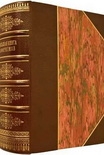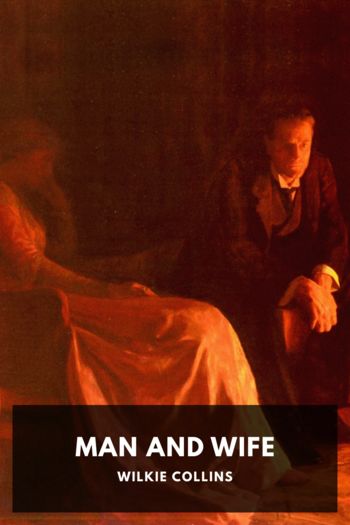Living Like Ed Ed Jr. (best ereader for pdf and epub txt) 📖

- Author: Ed Jr.
Book online «Living Like Ed Ed Jr. (best ereader for pdf and epub txt) 📖». Author Ed Jr.
We have blue bins for recycling and I think you can only put no. 1 and 2 plastic in the bins. I think no. 5 is not good, but maybe it’s 6. I just can’t remember.
In a city like L.A., until very recently, you could put only two kinds of plastic in the blue recycling bin, no. 1 and no. 2. You couldn’t put no. 3, 4, 5, 6, or 7plastic into the bin, but you still could recycle some of them.
The only things you couldn’t recycle in this house were those made of resins no. 3 and no. 5. The plastics industry would say it’s all recyclable, and I’m sure it is, but I don’t live near a processing plant that takes it. Your town might have different guidelines (or other facilities). You can find out more from your local municipality or from the community relations people at factories in your area.
THE SEVEN KINDS OF PLASTIC
No.1Polyethylene terephthalate (PET)This kind of plastic is used to make things like 2-liter soda bottles, boil-in the-bag pouches for frozen foods, and microwave food trays.No.2 High-density polyethylene (HDPE)This denotes stuff like laundry detergent bottles and motor oil bottles, milk jugs, aspirin bottles—that kind of thicker plastic.No.3Polyvinyl chloride (PVC)This is clear food and nonfood packaging, including cooking oil bottles, medical tubing, wire, cable insulation, etc.No.4 Low-density polyethylene (LDPE)This includes dry-cleaning bags, bread bags, frozen-food bags, the plastic wrap that you use to cover food, the bags you pull off the roll in the grocery store’s produce department, and also certain squeezable bottles, like for mustard.No.5Polypropylene (PP)This kind of plastic is used for certain medicine bottles, tough plastics that resist heat and moisture. It’s also used for yogurt containers, shampoo bottles, straws, margarine tubs, and syrup bottles.No.6Polystyrene (PS)This is actually plastic foam, better known as Styrofoam. It is used for grocery store meat trays, egg cartons, plastic plates, cups used for hot drinks, plastic cutlery, fast-food clamshell containers.No.7OtherCode 7 indicates a plastic made with a resin that’s not one of these other six codes, or a plastic made from more than one individual resin.
Because I couldn’t recycle them, I avoided 3 and 5 plastics when possible. I looked at an item before I bought it and if it had a 3 or a 5 on the bottom, I would see if I could get the same product that wasn’t packaged in a no. 3 or no. 5 resin. Unfortunately, there’re certain things that come in 3 and 5 only and they’re products that you need, so you buy them.
There’s another reason I tend to avoid no. 3 resin. PVC is one of the least environmentally friendly materials around. People have actually gone so far as to call it evil, and not without reason. I’ll let my friend Josh Bradley from 360 Interchange tell you more about PVC, and about a new material called ecoFoam, which in many cases can replace no. 3 resin.
Ed’s Green Friend: ecoFoam
PVC (polyvinyl chloride) is one of the most ubiquitous and most destructive materials made by man. It’s also one of the most versatile plastics.
We interact with PVC almost every minute of every day. When you start your day, you’re likely having your first contact with PVC, since it can be used in mattresses, pillows, pillow covers, and mattress covers. Your contact with this plastic continues as you walk across the carpet to the bathroom, where you pull back the shower curtain and water flows through PVC piping. Then you walk on a vinyl floor in the kitchen, where you reach into the refrigerator and pull out food wrapped in plastic for breakfast. On your way out the door, you stop to pick up some of your children’s toys, then slide onto your car’s vinyl seat and prepare to drive away while enjoying that “new car” smell. After work, you come home to water your lawn with your garden hose or your sprinklers, then relax in the plastic patio furniture.
PVC is all around us because of its versatility, ease of assembly, and low cost, but at what price to our health and environment?
The production of PVC creates vinyl chloride monomer (VCM) and hydrogen chloride (HCl), both of which have been linked to dramatic health issues, including liver cancer, respiratory damage, failure of the circulatory system, and death. Equally dangerous are the plasticizers used to make PVC more flexible for many of the products we use. These additives, called phthalates, help to create everything from the soft plastic toys that your children play with to the IV bags that provide vital fluids in the hospital. An EPA website lists more than 190 articles on the potential hazards of phthalates. Many places, including Japan and the European Union countries, have banned the use of some phthalates because of their impact on children’s health and their tendency to leach into the water system.
Throughout the entire life cycle of products made from PVC, we find damage to health and the environment. PVC is not degradable, it’s difficult to recycle, and it releases toxic fumes when burned. That means the 7 billion pounds of waste per year—and the 300 billion pounds of PVC nearing the end of its useful life—have all the makings of an environmental catastrophe.
Seventy percent of this waste comes from homes. We have the power to buy products made from less damaging, more easily recyclable plastics—and from more traditional materials, such as wood, glass, and natural fibers.
Plus, a new material called ecoFoam can replace PVC for most applications, without the harm to our bodies and our environment. Though still a petroleum-based product, ecoFoam uses no heavy metals in production. It contains no chlorine or phthalates.





Comments (0)